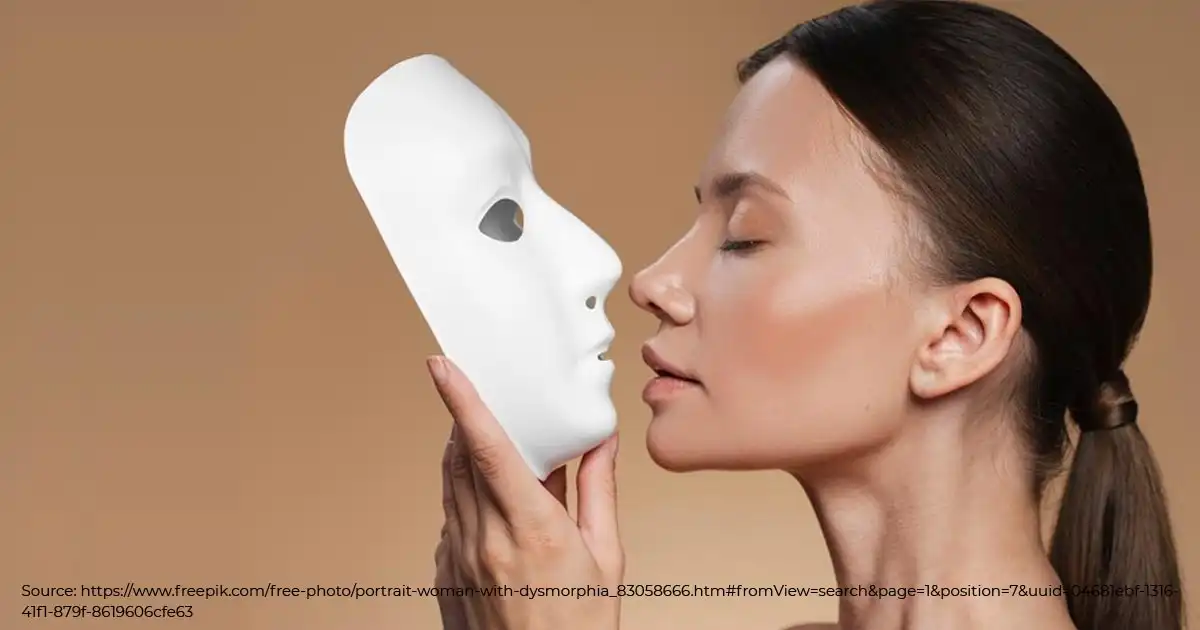Act of Confession: Popular Celebs with Dysmorphia & Sleep Woes!

Hey there, fellow celebrity enthusiasts and sleep health advocates!
Are you ready to dive into a topic that’s as important as it is often overlooked?
Today, we’re stepping into the world of body dysmorphia and sleep woes among some of your favorite celebrities. Yep, you heard it right!
These stars might seem to have it all – fame, fortune, and flawless appearances. These Celebs are plastered across magazine covers and social media feeds. But behind the glitz and glam, many are battling demons that are far from glamorous.
SmartMattressBuy.com is going to explore the stories of these celebrities who have bravely opened up about their struggles with body dysmorphia, shedding light on a condition that affects millions worldwide. From Hollywood heartthrobs to chart-topping musicians, no one is immune to the pressures of perfectionism and societal standards. And trust me, this is going to be a rollercoaster ride of emotions, empathy, and maybe even a sprinkle of inspiration.
But first, let’s break it down for those who might be unfamiliar with the term.
Body dysmorphia disorder (BDD) isn’t just your run-of-the-mill insecurity. It’s an obsessive anxiety disorder where individuals become fixated on perceived flaws in their appearance. Think of it as having a magnifying glass permanently glued to your self-image. Except the flaws you see are often blown way out of proportion. And the consequences?
Well, they can range from crippling self-doubt and depression to extreme measures like cosmetic surgery and eating disorders.
Now, I know what you’re thinking. How on earth can someone so beautiful, so talented, and so seemingly perfect struggle with something like this? Well, my friend, that’s exactly what we’re here to unravel. So buckle up, and grab your favorite snack! Let’s dive into the lives of these courageous souls who are breaking the silence surrounding body dysmorphia.
Female Celebrity with Dysphoria
First up on our list is none other than the stunning Megan Fox. Megan Fox, the stunning actress known for her roles in “Transformers” and “Jennifer’s Body.” Recently opened up about her battle with body dysmorphia. In a candid interview with Sports Illustrated, Fox revealed her ongoing struggle. She stated, “I don’t ever see myself the way other people see me… The journey of loving myself is going to be never-ending, I think.” Despite her undeniable beauty, Fox’s honesty sheds light on the pervasive nature of body image issues in the entertainment industry.

Billie Eilish, the Grammy-winning pop sensation, has been transparent about her struggles with body dysmorphia. From her early experiences in dance class to the pressures of fame, Eilish has navigated a tumultuous relationship with her body. In an interview with Rolling Stone, she confessed, “That was the peak of my body dysmorphia. I couldn’t look in the mirror at all.” Despite her success, Eilish’s story reminds us that even the most celebrated artists are not immune to the effects of societal beauty standards.
Holly Madison is known for her time in the Playboy Mansion. She shared her battle with body dysmorphia in a revealing interview with People. Living under the scrutiny of Hugh Hefner’s gaze took a toll on Madison’s self-esteem. This led her to consider drastic measures to attain the “ideal” Playboy look. Madison’s story serves as a stark reminder of the damaging impact of unrealistic beauty standards perpetuated by the media.
Lili Reinhart, star of the hit series “Riverdale,” has been vocal about her struggle with body dysmorphia stemming from acne. In an interview with Glamour, Reinhart shared her experience of feeling self-conscious and anxious due to her skin condition. Despite her fame, Reinhart’s honesty about her insecurities highlights the importance of destigmatizing mental health struggles in the spotlight.

Demi Lovato, the powerhouse vocalist and advocate, has been a vocal advocate for mental health awareness, particularly regarding eating disorders and body dysmorphia. In an interview on Pretty Big Deal with Ashley Graham, Lovato revealed her past struggles. Her experience with exercise and food obsession acknowledges the blurred lines between recovery and relapse. Lovato’s transparency serves as a beacon of hope for those battling similar demons.
Cameron Diaz, the beloved actress and author, has spoken out about her struggles with societal beauty standards and body dysmorphia. In an interview on the podcast Rule Breakers, Diaz reflected on her journey toward self-acceptance. She acknowledges the harmful impact of societal objectification on women’s self-esteem. Diaz’s story serves as a testament to the importance of embracing authenticity in a world obsessed with perfection.

Hayden Panettiere is known for her roles in various TV shows and movies. She has been candid about her struggles with body dysmorphia. Particularly during her teenage years when she was constantly scrutinized by the media. Despite facing criticism and ridicule for her appearance. Panettiere has emphasized the importance of self-acceptance and understanding that beauty is subjective. Her openness about overcoming body dysmorphia serves as an inspiration for others struggling with similar issues.
Tallulah Willis, the daughter of Demi Moore and Bruce Willis, has bravely shared her journey with body dysmorphia, recounting the pressure she felt to resemble her mother and the distress it caused her. Through her candid Instagram posts, Willis promotes self-love and acceptance at any size or stage of life. Her coping mechanisms, such as taking breaks from social media and finding solace in literature, offer valuable insights into managing BDD spirals and prioritizing mental well-being.
Reality star Chloe Ferry has opened up about her battle with body dysmorphia, which led her to undergo numerous cosmetic surgeries in pursuit of perfection. Despite spending a significant amount on plastic surgery, Ferry realized that true happiness comes from self-acceptance rather than external alterations. Her story highlights the dangers of equating physical appearance with self-worth and the importance of embracing one’s unique beauty.
Sarah Michelle Gellar, best known for her role in “Buffy the Vampire Slayer,” has acknowledged her struggle with body dysmorphic disorder, emphasizing that it’s a common issue among women. By speaking openly about her experiences, Gellar helps reduce the stigma surrounding BDD and encourages others to seek support and understanding.
Actress Brittany Snow has bravely shared her journey with multiple mental health challenges, including anorexia, exercise bulimia, depression, and body dysmorphia. Despite her successful career, Snow’s story underscores the prevalence of mental health issues in the entertainment industry and the importance of seeking help and support.
Miley Cyrus, known for her Disney Channel days as Hannah Montana, has spoken about the body image issues and identity crisis she experienced as a result of her early fame. Her candidness about the pressures of being in the spotlight sheds light on the detrimental effects of societal beauty standards on mental health.

Taylor Swift’s documentary “Miss Americana” provides insight into her battle with body dysmorphia and eating disorders, triggered by the relentless scrutiny of her appearance in the media. Swift’s vulnerability in sharing her struggles encourages others to prioritize mental health and self-care.
Amandla Stenberg, known for her roles in films like “The Hate U Give,” has addressed the pressure to conform to unrealistic beauty standards in Hollywood. Stenberg’s advocacy for body positivity and self-acceptance challenges harmful societal norms and promotes inclusivity.
Reality star Lauren Goodger has been vocal about her battle with body dysmorphia, expressing her ongoing struggle with self-image despite external validation. Goodger’s honesty about her experiences encourages others to seek professional help and prioritize their mental well-being.
Reality star Marnie Simpson has shared her journey with body dysmorphia, acknowledging her tendency to criticize herself harshly in front of the mirror. Simpson’s decision to swear off cosmetic procedures highlights the importance of self-acceptance and embracing imperfection.
Lana Condor, known for her roles in “To All the Boys I’ve Loved Before,” has spoken about her experience with body dysmorphia and eating disorders. By advocating for body positivity and celebrating food, Condor promotes self-love and acceptance in the face of societal pressures.
Shirley Manson, the lead singer of Garbage, has openly discussed her struggles with body dysmorphic disorder, recounting the obsessive rituals she engaged in regarding her appearance. Despite her success in the music industry, Manson battled with feelings of inadequacy and self-doubt, emphasizing the toll that societal beauty standards can take on one’s mental health. Her journey toward self-acceptance is a powerful reminder of the importance of prioritizing inner well-being over external validation.
Male celebrity with Dysphoria
Robert Pattinson, known for his role as Edward Cullen in the “Twilight” saga, has spoken candidly about his experiences with body dysmorphia and anxiety. Despite his heartthrob status, Pattinson has admitted to feeling immense pressure to conform to Hollywood’s beauty standards, leading to debilitating anxiety. Pattinson’s vulnerability reminds us that even Hollywood heartthrobs face internal battles with self-image.

Sam Smith, the Grammy-winning singer-songwriter, has been transparent about their struggles with body image and body dysmorphia. Smith’s journey towards self-acceptance and reclaiming their body serves as a source of inspiration for fans facing similar challenges.
Ed Sheeran has spoken openly about his body image struggles, highlighting the importance of breaking the stigma surrounding men’s mental health issues. By sharing his experiences, Sheeran encourages others to seek help and support without shame or judgment.
Reid Ewing, known for his role in “Modern Family,” has bravely shared his journey with body dysmorphic disorder (BDD) and the detrimental impact of cosmetic surgeries. Despite his initial belief that surgery would transform his appearance, Ewing faced disappointment and anguish after multiple procedures. His story sheds light on the ethical considerations surrounding cosmetic surgery and the importance of addressing underlying mental health issues.
Famous Celebrity with Dysmorphia
Michael Jackson, the legendary “King of Pop,” endured a lifelong struggle with body image issues, possibly stemming from childhood trauma and exacerbated by fame. His extensive cosmetic surgeries and efforts to conceal his appearance suggest underlying psychological distress, including body dysmorphic disorder. Jackson’s story highlights the complex relationship between celebrity, identity, and mental health in the public eye.

Andy Warhol, the iconic pop artist, grappled with body dysmorphia, as evidenced by his preoccupation with his physical appearance and attempts to alter it through cosmetic procedures. His artwork reflects themes of self-perception and societal beauty ideals, providing insight into his personal struggles with body image. Warhol’s story underscores the pervasive nature of body dysmorphia across diverse fields, including the arts.
Franz Kafka, the renowned author of “Metamorphosis,” documented his profound self-loathing and dissatisfaction with his appearance in his diaries, suggesting a struggle with body dysmorphic disorder. Despite his literary success, Kafka’s writings reveal a deep-seated insecurity regarding his physical appearance, highlighting the psychological impact of distorted self-perception. Kafka’s story serves as a poignant reminder of the internal battles faced by individuals with BDD, regardless of external achievements.
Sylvia Plath, the celebrated poet and novelist, expressed profound self-criticism and dissatisfaction with her appearance in her writings, indicating a potential struggle with body dysmorphic disorder. Despite her literary prowess, Plath’s introspective reflections reveal a persistent sense of ugliness and imperfection, underscoring the devastating effects of distorted self-image on mental health. Plath’s story illuminates the intersection of creativity, identity, and body image in the context of mental illness.
Dove Cameron Shares Her Journey through Dysphoria and Identity Challenges

Dove Cameron’s emotional post on Instagram, where she bravely opened up about her struggles with dysphoria and identity, sheds light on the deeply personal journey many individuals face in understanding and accepting themselves. As a beloved figure in the entertainment industry, Cameron’s candidness resonates with fans who may also grapple with similar feelings of uncertainty and self-doubt.
In her heartfelt message, Cameron reflects on the dichotomy between her inner sense of self and the external perceptions imposed upon her. She expresses a profound connection to her inner identity, likening it to a cherished part of herself that she deeply loves and protects. However, she also acknowledges the pervasive belief that who she is may be fundamentally wrong or inadequate, leading to a constant struggle to reconcile conflicting aspects of her identity.
One of the poignant themes in Cameron’s post is her exploration of gender and the complexities of navigating societal expectations and personal authenticity. She articulates feelings of disconnection from her perceived outward identity, describing moments of discomfort and alienation from the reflection she sees in the mirror. Despite grappling with these challenges, she maintains a sense of curiosity and openness to self-discovery, acknowledging that her journey towards understanding may be ongoing and non-linear.
Cameron’s vulnerability in sharing her experiences resonates with many, highlighting the importance of fostering empathy and understanding towards individuals navigating their gender identity and self-expression. Her courage in speaking openly about her struggles with dysphoria contributes to broader conversations surrounding mental health, self-acceptance, and the diverse experiences within the LGBTQ+ community.
Moreover, Cameron’s contributions to queer representation in the entertainment industry have been significant, amplifying voices and experiences that are often marginalized or overlooked. Through her artistry and advocacy, she continues to empower and uplift members of the LGBTQ+ community, inspiring others to embrace their identities authentically and unapologetically.
Diving into the World of Body Dysmorphic Disorder (BDD)
Imagine waking up every day feeling like there’s something fundamentally flawed about your appearance. Your mind becomes consumed by obsessive thoughts about perceived flaws, and you find yourself engaging in repetitive behaviors to try to alleviate the distress. This is the reality for individuals living with Body Dysmorphic Disorder (BDD), a condition that affects up to 3% of the adult population, according to estimates.
BDD, nestled under the umbrella of Obsessive-Compulsive and Related Disorders, isn’t just about not feeling confident in your skin. It’s a relentless battle with obsessive concerns about one’s appearance, often accompanied by compulsive rituals aimed at fixing perceived flaws. The impact goes far beyond the surface, infiltrating every aspect of life, from social interactions to work performance. And the toll it takes on mental health is staggering, with increased risks of suicidal thoughts and behaviors, along with a host of other psychiatric conditions
Enter cognitive behavioral therapy (CBT), heralded as the gold standard for treating BDD. Yet, despite its effectiveness, a significant number of individuals either don’t receive CBT or fail to respond adequately to treatment.
The question looms: what else could be standing in the way of finding relief for those battling BDD?
One potential culprit that’s flown under the radar is sleep disruption. We’re talking about those restless nights, tossing and turning as worries about appearance swirl in the mind. Sleep problems are notorious for wreaking havoc on mental health, exacerbating symptoms of depression, anxiety, and PTSD, and throwing a wrench in treatment efforts.
Understanding Dysphoria: A Deep Dive into Mental Discomfort
In the intricate landscape of mental health, dysphoria emerges as a poignant expression of unease and dissatisfaction. It’s a subtle yet profound state of mind that often accompanies various mental illnesses, offering a glimpse into the complex workings of the human psyche. In this comprehensive exploration, we delve into the depths of dysphoria, deciphering its nuances, manifestations, underlying causes, and coping strategies.
Unveiling Dysphoria: A State of Mental Discomfort
Dysphoria, often characterized by a pervasive sense of unease, is akin to walking through a fog of discontentment. It’s not a standalone diagnosis but rather a symptom intertwined with several mental health conditions such as anxiety, depression, and substance use disorders. In essence, dysphoria paints a canvas of emotional turbulence, contrasting sharply with the euphoria of extreme happiness.
Recognizing the Signs: Navigating the Landscape of Dysphoria
Identifying dysphoria amidst the cacophony of emotions is akin to deciphering a complex code. It manifests through various signs, serving as subtle indicators of inner turmoil. Apathy, fatigue, and low life satisfaction form the backdrop of this emotional landscape, overshadowed by the shadows of sadness, unease, and worry. Individuals grappling with dysphoria often find themselves adrift in a sea of negative thoughts, pondering implausible outcomes, and wrestling with an uncertain future.
Navigating the Maze of Dysphoria: Understanding Symptoms and Causes
In the intricate tapestry of human emotions, dysphoria emerges as a complex interplay of unhappiness and irritability, casting a shadow over the landscape of mental well-being. While fleeting moments of discontent may ebb and flow like tides, persistent dysphoria signals a deeper undercurrent of emotional turmoil, warranting closer examination. In this exploration, we unravel the symptoms and delve into the underlying causes of dysphoria, shedding light on the enigmatic nature of this pervasive mood state.
Decoding the Symptoms: Unveiling the Shades of Dysphoria
Dysphoria, like a chameleon, adopts various guises, manifesting through a spectrum of emotions that range from subtle dissatisfaction to profound distress. At its core, dysphoria encompasses both unhappiness and irritability, weaving a web of discomfort that ensnares the individual in a state of emotional unrest.
- Unhappiness: The contours of unhappiness are as varied as the human experience itself. It may manifest as a lingering sense of discontent with one’s life circumstances or a pervasive feeling of unease that defies explanation. Dissatisfaction permeates the fabric of daily existence, casting a shadow over even the most mundane of activities.
- Irritability: Like a smoldering ember, irritability simmers beneath the surface, erupting into flames at the slightest provocation. Minor inconveniences morph into major grievances, and frustrations mount with alarming speed. Restlessness pervades every aspect of life, making it difficult to find solace or stillness amidst the chaos.
Tracing the Origins: Exploring the Causes of Dysphoria
The genesis of dysphoria lies shrouded in mystery, its roots entwined with a myriad of factors that shape the landscape of human experience. From external stressors to internal conflicts, dysphoria finds fertile ground in the fertile soil of adversity and uncertainty.
- Stress: The relentless onslaught of stress, whether from work, home, or the complexities of modern life, serves as a fertile breeding ground for dysphoria. While transient stressors may trigger temporary fluctuations in mood, chronic stressors can cultivate a pervasive sense of discontent that permeates every aspect of existence.
- Grief: The specter of grief casts a long shadow over the human psyche, leaving in its wake a trail of emotional devastation. While mourning is a natural part of the human experience, unresolved grief can give rise to dysphoria, trapping individuals in a cycle of despair and anguish.
- Medical Conditions: The body and mind are intricately intertwined, their fates inexorably linked by the delicate balance of biochemical processes. Medical conditions, ranging from hypoglycemia to chronic illnesses like cancer or diabetes, can wreak havoc on the delicate equilibrium of mental well-being, giving rise to dysphoric moods that defy conventional treatment.
- Mental Illnesses: The tangled web of mental illness casts a wide net, ensnaring individuals in a maelstrom of emotional upheaval. Generalized anxiety disorder, major depression, borderline personality disorder, and bipolar disorder are just a few of the conditions associated with dysphoric moods, each leaving its indelible mark on the psyche.
- Relationship Problems: The tapestry of human relationships is woven with threads of love, trust, and intimacy, but it is also fraught with pitfalls and challenges. Dysphoria often rears its head in the midst of relational strife, reflecting the underlying discord and dysfunction that permeate troubled partnerships.
Untangling the Web: Exploring the Causes of Dysphoria
The roots of dysphoria delve deep into the soil of human experience, intertwining with various factors to create a complex tapestry of emotional distress. From environmental stressors to underlying health conditions and the side effects of medications, dysphoria finds its origins in a myriad of sources. The loss of a loved one, a toxic work environment, or even a deficiency in essential nutrients can all contribute to the onset of dysphoria, underscoring its multifaceted nature.
Navigating the Nexus: Dysphoria and Other Mental Health Conditions
Dysphoria, like a chameleon, seamlessly blends into the spectrum of mental health disorders, making its presence felt across various diagnoses. Whether it’s adjustment disorder, bipolar disorder, depression, or personality disorders, dysphoria often serves as a silent companion, amplifying the symptoms and exacerbating the challenges faced by individuals battling these conditions. Substance use disorders further complicate the picture, with dysphoria acting as both a cause and consequence of heavy drinking or tobacco use.
The Gender Divide: Exploring Gender Dysphoria
Among the myriad forms of dysphoria, gender dysphoria stands out as a poignant expression of identity conflict. The distress stemming from the misalignment between one’s assigned sex at birth and their gender identity paints a stark picture of inner turmoil. While transitioning offers a glimmer of hope for some, others continue to grapple with dysphoria, navigating the complexities of self-discovery and societal acceptance.
Tardive Dysphoria: The Lingering Shadow of Chronic Depression
In the realm of mental health, some individuals find themselves ensnared in the grip of chronic depression, resistant to conventional treatments and impervious to fleeting moments of respite. Tardive dysphoria emerges as a somber reminder of this relentless battle, linked to the prolonged use of antidepressants. As hope flickers in the darkness, those afflicted by this condition grapple with the daunting prospect of finding solace amidst the shadows.
Embracing Hope: Coping Strategies for Dysphoria
Amidst the labyrinth of dysphoria, glimmers of hope illuminate the path towards healing and resilience. While professional interventions offer a lifeline for many, lifestyle modifications serve as pillars of support, bolstering individuals in their quest for emotional equilibrium. Adjusting routines, prioritizing nutrition, engaging in regular exercise, and fostering social connections offer rays of light amidst the darkness, empowering individuals to navigate the tumultuous seas of dysphoria with resilience and grace.
Dysphoria in Diagnosis: Understanding Specific Conditions
Within the realm of mental health diagnoses, the term “dysphoria” holds significance in delineating specific conditions that encompass a spectrum of emotional distress. These diagnoses go beyond transient mood fluctuations, embodying complex interplays of biology, psychology, and societal constructs. Let’s explore some of these conditions where “dysphoria” is a key descriptor and the implications they carry for individuals navigating their mental health journey.
- Gender Dysphoria: A Journey of Identity
Gender dysphoria stands as a poignant testament to the intricate dance between one’s assigned sex at birth and their deeply felt gender identity. For individuals grappling with this condition, the discrepancy between their innate sense of self and societal expectations manifests as profound emotional upheaval. The distress permeates every aspect of their existence, casting shadows over relationships, self-image, and societal acceptance.
Recognizing and addressing gender dysphoria requires a nuanced approach, one that prioritizes empathy, understanding, and affirming care. From exploring gender-affirming interventions to fostering safe spaces for self-expression, the journey toward authenticity is paved with both challenges and triumphs.
- What is Premenstrual Dysphoric Disorder?
Premenstrual Dysphoric Disorder (PMDD) is a severe form of premenstrual syndrome (PMS) characterized by significant emotional and physical symptoms that occur in the luteal phase of the menstrual cycle. Unlike PMS, which is relatively common and may cause mild discomfort, PMDD involves symptoms that are severe enough to interfere with daily functioning and quality of life.
PMDD typically manifests in the week or two before menstruation and subsides shortly after the onset of menstrual bleeding. The symptoms of PMDD can vary widely among individuals but commonly include:
- Mood Symptoms: Severe mood swings, irritability, anger, depression, anxiety, and feelings of hopelessness are hallmark features of PMDD. These mood disturbances are often disproportionate to the circumstances and can significantly impact relationships and daily activities.
- Physical Symptoms: Physical symptoms of PMDD may include breast tenderness, bloating, fatigue, headaches, joint or muscle pain, and changes in appetite or sleep patterns.
- Cognitive Symptoms: Some individuals with PMDD may experience cognitive symptoms such as difficulty concentrating, confusion, forgetfulness, and decreased interest in usual activities.
- Behavioral Symptoms: PMDD can also lead to changes in behavior, including increased sensitivity to rejection, social withdrawal, impulsivity, and heightened conflict with others.
PMDD is believed to be caused by the fluctuation of hormones, particularly estrogen and progesterone, during the menstrual cycle. These hormonal changes can affect neurotransmitters such as serotonin, which plays a role in regulating mood. Additionally, genetic factors, neurotransmitter abnormalities, and environmental factors may contribute to the development of PMDD.
Diagnosing PMDD involves a thorough evaluation by a healthcare provider, including a review of symptoms, medical history, and ruling out other underlying conditions that could mimic PMDD. Treatment options for PMDD may include:
- Lifestyle Modifications: Adopting healthy lifestyle habits such as regular exercise, stress management techniques, balanced nutrition, and adequate sleep can help alleviate symptoms of PMDD.
- Medications: Certain medications, such as selective serotonin reuptake inhibitors (SSRIs), antidepressants, hormonal contraceptives, and nonsteroidal anti-inflammatory drugs (NSAIDs), may be prescribed to help manage mood, physical, and cognitive symptoms of PMDD.
- Psychotherapy: Cognitive-behavioral therapy (CBT), interpersonal therapy, and other forms of psychotherapy can be beneficial in helping individuals develop coping strategies, improve communication skills, and address underlying psychological factors contributing to PMDD.
- Alternative Therapies: Some individuals may find relief from PMDD symptoms through alternative therapies such as acupuncture, yoga, herbal supplements, and dietary changes. However, it’s essential to consult with a healthcare provider before trying any alternative treatments.
Overall, PMDD can have a significant impact on an individual’s quality of life, but with appropriate diagnosis and treatment, many people can effectively manage their symptoms and lead fulfilling lives. If you or someone you know is experiencing severe premenstrual symptoms, it’s essential to seek support from a healthcare provider to explore available treatment options.
- Anxiety Disorder – Mental Disorder
Anxiety disorder, in its various forms, can indeed manifest with dysphoric symptoms. Dysphoria, as described earlier, involves a profound sense of unease or dissatisfaction, often accompanied by feelings of sadness, irritability, or tension. While anxiety disorders primarily involve excessive worry, fear, or apprehension, individuals experiencing these conditions may also present with dysphoric mood symptoms.
Dysphoria in Anxiety Disorders:
Generalized Anxiety Disorder (GAD): Individuals with GAD may experience persistent worry and anxiety about various aspects of life, accompanied by a dysphoric mood. They may feel tense, irritable, or restless, and have difficulty controlling their worrying thoughts. This dysphoria can contribute to feelings of dissatisfaction with life circumstances and a sense of inner tension.
- Panic Disorder: While panic attacks primarily involve intense fear or discomfort, they can also lead to dysphoric symptoms. Following a panic attack, individuals may experience residual feelings of sadness, hopelessness, or irritability. Fear of experiencing another panic attack can also contribute to ongoing dysphoric mood symptoms.
- Social Anxiety Disorder (Social Phobia): Social anxiety disorder often co-occurs with dysphoric mood symptoms, particularly in anticipation of social situations. Individuals may feel deeply unhappy or tense before social interactions, fearing judgment or embarrassment. These dysphoric feelings may persist during or after social encounters, contributing to social withdrawal or avoidance behaviors.
- Obsessive-Compulsive Disorder (OCD): Dysphoric mood symptoms can accompany the distressing obsessions and compulsions characteristic of OCD. Individuals may feel overwhelmed by intrusive thoughts or distressed by their inability to control compulsive behaviors. This dysphoria can exacerbate feelings of frustration, guilt, or shame associated with the disorder.
- Post-Traumatic Stress Disorder (PTSD): PTSD often involves dysphoric mood symptoms in addition to the hallmark features of the disorder, such as intrusive memories and hypervigilance. Individuals may experience profound sadness, irritability, or emotional numbness as they grapple with the aftermath of a traumatic event. Dysphoric mood symptoms may fluctuate in intensity over time, influenced by triggers or reminders of the trauma.
Treatment Approach:
Addressing dysphoric mood symptoms in the context of anxiety disorders requires a comprehensive treatment approach. Alongside interventions targeting anxiety symptoms, such as cognitive-behavioral therapy (CBT) and medication management, it’s essential to address underlying dysphoria and associated mood disturbances. This may involve techniques to enhance mood regulation, coping skills for managing negative emotions, and exploring underlying factors contributing to dysphoric mood symptoms.
Moreover, fostering a supportive therapeutic relationship and creating a safe space for individuals to express and process their emotions can be instrumental in addressing dysphoric symptoms within the context of anxiety disorders. By addressing both anxiety and dysphoria, individuals can experience holistic healing and improved overall well-being.
- Eating disorders – Mental disorder
Eating disorders, encompass conditions such as anorexia nervosa, bulimia nervosa, binge eating disorder, and others. This can indeed be associated with dysphoric symptoms. Dysphoria is characterized by a deep sense of unease or dissatisfaction. This can intertwine with the complex emotional landscape of individuals struggling with eating disorders. Exacerbating their challenges and influencing their behaviors.
Dysphoria in Eating Disorders:
- Anorexia Nervosa: Individuals with anorexia nervosa often experience intense fear of gaining weight or becoming fat. This leads to restrictive eating behaviors and significant weight loss. This fear of weight gain can be accompanied by dysphoric mood symptoms such as sadness, anxiety, or irritability. Dysphoria may stem from distorted body image perceptions. It also includes feelings of inadequacy, or the relentless pursuit of thinness, which can overshadow other aspects of life satisfaction.
- Bulimia Nervosa: Bulimia nervosa is characterized by recurrent episodes of binge eating. Followed by compensatory behaviors such as self-induced vomiting, excessive exercise, or fasting. Dysphoria may arise in the aftermath of binge episodes. Individuals grapple with feelings of guilt, shame, or disgust over their eating behaviors.
The cycle of bingeing and purging can perpetuate dysphoric mood symptoms. Contributing to a sense of despair or hopelessness.
- Binge Eating Disorder (BED): Individuals with BED frequently engage in episodes of excessive food consumption. Often in response to emotional distress or negative mood states. Dysphoria may precede binge episodes, serving as a trigger for compulsive overeating as individuals seek temporary relief from unpleasant emotions. However, this coping mechanism can ultimately exacerbate dysphoric symptoms, leading to feelings of remorse, self-loathing, or loss of control.
- Other Specified Feeding or Eating Disorders (OSFED): OSFED encompasses a range of eating disorders. This does not meet the full diagnostic criteria for anorexia nervosa, bulimia nervosa, or BED. Dysphoric mood symptoms may be prevalent in individuals with OSFED. Particularly those struggling with atypical eating patterns, body image disturbances, or weight fluctuations. The intersection of dysphoria with disordered eating behaviors can complicate treatment and recovery efforts.
Treatment Approach:
Addressing dysphoric symptoms within the context of eating disorders necessitates a multifaceted treatment approach. This targets both the psychological and behavioral aspects of the condition. Key components of treatment may include:
- Psychotherapy: Various forms of psychotherapy. Such as cognitive-behavioral therapy (CBT), dialectical behavior therapy (DBT), or interpersonal therapy. This can help individuals explore underlying emotions, and challenge maladaptive thoughts and beliefs. Also helps develop healthier coping strategies for managing dysphoria and other emotional triggers.
- Nutritional Counseling: Working with registered dietitians or nutritionists can provide individuals with practical guidance. Especially on establishing balanced eating patterns, and challenging food-related fears or restrictions. Also, fostering a positive relationship with food and body image.
- Medication Management: In some cases, psychiatric medications such as antidepressants or mood stabilizers may be prescribed to alleviate dysphoric symptoms. Particularly when co-occurring mood disorders or anxiety disorders are present alongside the eating disorder.
- Support Groups: Participating in support groups or peer-led recovery communities. This can offer individuals validation, encouragement, and a sense of belonging. As they navigate the challenges of eating disorder recovery. Sharing experiences and coping strategies with others who have faced similar struggles can be empowering and reassuring.
- Family-Based Treatment: For adolescents and young adults with eating disorders. Involving family members in treatment through family-based treatment (FBT) or similar approaches can facilitate communication. It also addresses familial dynamics, and provides essential support for the individual’s recovery journey.
By addressing dysphoric symptoms in conjunction with disordered eating behaviors. Individuals with eating disorders can work towards healing their relationship with food, body image, and emotional well-being. Treatment providers need to approach each individual. Holistically, recognizing the interconnectedness of physical, psychological, and emotional factors in the recovery process.
- Masculinity Dysphoria
Masculinity dysphoria refers to a condition in which individuals experience distress or dissatisfaction. With aspects of their masculinity or the societal expectations placed upon them based on their gender identity. This phenomenon can occur within the context of gender identity struggles, and societal pressures. Or conflicting perceptions of what it means to embody masculinity.
Understanding Masculinity Dysphoria:
- Gender Identity Struggles: For some individuals, masculinity dysphoria may stem from a misalignment. Between their gender identity and societal expectations associated with masculinity. This can occur in transgender or non-binary individuals who may feel discomfort or distress with being perceived as masculine. Or adhering to traditional masculine norms. The dissonance between one’s internal sense of gender and external expectations can lead to dysphoria and emotional distress.
- Societal Pressures: Society often imposes rigid and narrow definitions of masculinity. Emphasizing traits such as strength, stoicism, dominance, and emotional restraint. Individuals who do not conform to these expectations or who express traits that are perceived as “non-masculine”. They may experience social stigma, discrimination, or internalized shame. This societal pressure to conform to masculine norms can contribute to feelings of inadequacy, insecurity, or dysphoria.
- Conflicting Perceptions: Masculinity dysphoria can also arise from internal conflicts or contradictions within an individual’s understanding of masculinity. For example, a person may feel conflicted about expressing vulnerability, and emotional sensitivity. Or nurturing behaviors due to societal expectations that equate masculinity with toughness or emotional stoicism. These conflicting perceptions of masculinity can create internal tension and distress.
Manifestations of Masculinity Dysphoria:
- Emotional Distress: Individuals experiencing masculinity dysphoria may feel profound emotional distress, including feelings of sadness, anxiety, shame, or self-doubt. These emotions may stem from the perceived failure to meet societal expectations of masculinity. Or from internal struggles with gender identity.
- Body Image Concerns: Masculinity dysphoria can also manifest in body image concerns related to physical appearance. Muscle mass, or other physical attributes associated with masculinity. Individuals may feel dissatisfaction with their bodies. Or may engage in behaviors such as excessive exercise, or steroid use. Also, restrictive eating patterns in an attempt to conform to masculine ideals.
- Social Isolation: The fear of judgment or rejection based on perceived deviations from masculine norms. This may lead individuals to withdraw socially or avoid situations where their masculinity may be questioned. This social isolation can exacerbate feelings of loneliness, alienation, or dysphoria.
- Identity Confusion: Masculinity dysphoria may contribute to confusion or ambivalence about one’s identity. Particularly for individuals who grapple with conflicting feelings about their gender expression or societal roles. This uncertainty about where one fits within the spectrum of masculinity. This can intensify feelings of dysphoria and psychological distress.
Addressing Masculinity Dysphoria:
- Self-Exploration: Individuals experiencing masculinity dysphoria may benefit from self-exploration and reflection. On their gender identity, values, and personal beliefs about masculinity. This process can involve questioning societal norms, challenging internalized stereotypes, and embracing a more fluid and authentic expression of gender.
- Therapy: Therapy or counseling with a knowledgeable mental health professional can provide a supportive space. Specially for individuals to explore their feelings, and address underlying issues contributing to dysphoria. This helps develop coping strategies for managing distress. Cognitive-behavioral therapy (CBT), acceptance and commitment therapy (ACT), or gender-affirming therapy may be particularly helpful for navigating masculinity dysphoria.
- Community Support: Connecting with supportive communities or peer groups of individuals who share similar experiences. Can provide validation, solidarity, and a sense of belonging. Online forums, support groups, or LGBTQ+ organizations may offer resources, advocacy, and social support for individuals navigating masculinity dysphoria.
- Education and Advocacy: Education about gender diversity, masculinity, and the harmful effects of rigid gender norms. Can help challenge stereotypes and promote acceptance and inclusivity. Advocacy efforts aimed at reducing stigma, discrimination, and gender-based expectations can create more affirming environments for individuals experiencing masculinity dysphoria.
Overall, addressing masculinity dysphoria requires a compassionate and understanding approach that acknowledges the complexity of gender identity and expression. By fostering self-acceptance, challenging societal norms, and seeking support from affirming communities. Individuals can navigate masculinity dysphoria with greater resilience and authenticity.
Take Away!
Dysphoria, a complex state of profound unease and dissatisfaction. This knows no boundaries – not even in the realm of the rich and famous. Even celebrities, with their glamorous lifestyles, are not immune to its grasp. The spotlight may shine brightly on them. But behind the scenes, they may grapple with dysphoric feelings that disrupt their sense of well-being.
Moreover, dysphoria’s impact extends beyond emotional turbulence, reaching into the realm of sleep. The intricate relationship between dysphoria and sleep disruption is a two-way street. On one hand, dysphoria can lead to difficulties falling asleep or staying asleep. Racing thoughts and emotional distress make it hard to find rest. On the other hand, poor sleep quality exacerbates dysphoric symptoms. It amplifies feelings of unease and contributes to a vicious cycle of distress.
Understanding the interplay between dysphoria and sleep is essential for effectively addressing both issues. Recognize the signs of dysphoria and implement strategies to improve sleep hygiene. Individuals – including celebrities – can take proactive steps toward reclaiming their mental and emotional well-being.
Therefore, allow the experiences of celebrities facing dysmorphia and sleep challenges to resonate as a reminder. While chasing our aspirations, let’s prioritize our well-being, starting with quality sleep. Let SmartMattressBuy.com be your guide to a healthier lifestyle and better sleep.
FAQs on Dysphoria!
Q1. What famous person has body dysmorphia?
- Robert Pattinson, renowned for his role in the Twilight movies, candidly shared his struggle with BDD. He citing it as a source of “overall tremendous anxiety.”
Q2. Who is the actress with body dysmorphia?
- Jane Fonda, the iconic actress who gained fame and later became a fitness icon. She has spoken openly about her struggles with body image during her younger years.
Q3. Does Billie Eilish have body dysmorphic disorder?
- In an interview with Rolling Stone, Billie Eilish delved into her challenges with self-perception and body image. She revealed that at the height of her struggles with BDD. She couldn’t even bear to look at herself in a mirror.
Q4. Can you be attractive and have body dysmorphia?
- Despite their objective attractiveness, individuals grappling with BDD may often be misunderstood as vain. Consequently, their condition may go undiagnosed or dismissed, exacerbating their struggles.
Q5. How a person with body dysmorphia see themselves?
- Individuals with body dysmorphic disorder frequently engage in compulsive behaviors. Such as constant mirror-checking, driven by a belief in their perceived physical flaws. They may also seek reassurance from others about their appearance.
Celebrity Articles!
- Popular But Tired Lifestyles Of Celebrities With Sleep Problems!
- Tom Hiddleston Spills The Secrets On Better Sleep!
- Confessions Of A Celebrity On Insomnia Revealed!
- What This Movie Has To Talk About Sleep!
Reference:
- Albohy, Amgad. “https://www. sciencedirect. com/science/article/abs/pii/S0378874123004993? via% 3Dihub.” (2023).
https://www.sciencedirect.com/science/article/abs/pii/S0165032723013964 - https://www.cdc.gov/pcd/issues/2021/20_0573.htm
- https://www.verywellmind.com/what-is-dysphoria-4588634
- https://www.regain.us/advice/general/what-is-dysphoria-recognizing-signs-and-symptoms-and-identifying-a-dysphoric-mood/
- Datta, Upasana. “How Do I Know If I Have Narcolepsy? Important Facts.” smartmattressbuy.com, 24 02 2024, https://www.smartmattressbuy.com/blog/how-do-i-know-if-i-have-narcolepsy-important-facts/
- https://www.sheknows.com/health-and-wellness/slideshow/2826677/celebrities-body-dysmorphia/23/
- https://bddfoundation.org/information/more-about-bdd/famous-people-with-bdd/
